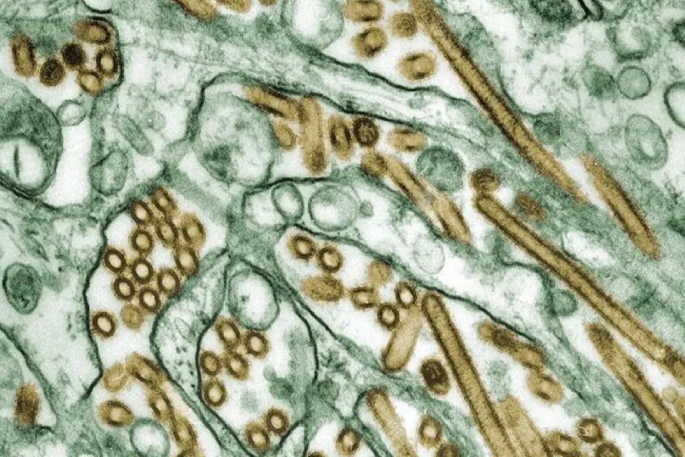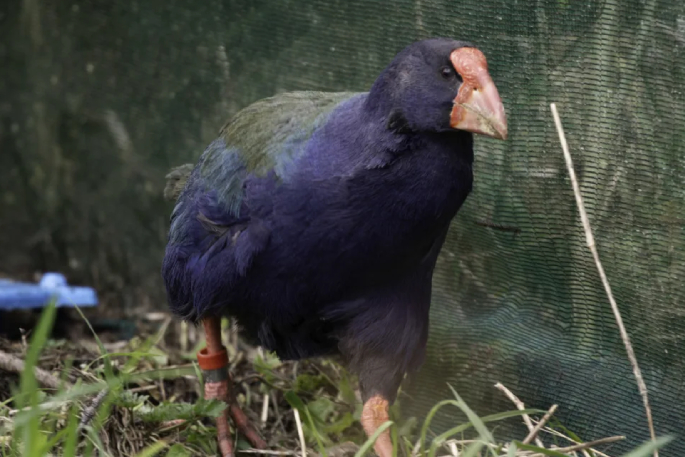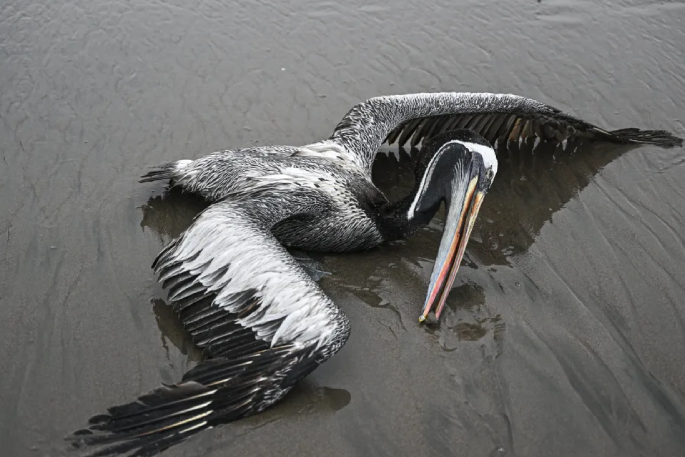As cases of bird flu mount overseas, New Zealand officials are bolstering their plans in case the virus arrives on our shores.
Hundreds of millions of birds have now been destroyed around the globe due to infection with the highly pathogenic strains of avian influenza, mostly the H5 and H7 strains.
In June, the first human case of H5N2 died in Mexico, and this month, pet cats have been confirmed infected in the United States.
Overseas officials are ramping up testing amid fears of infected beef being eaten by humans, while experts here at home are vaccinating native manu against the deadly virus.
Here's what you need to know.
Bird flu's spread overseas
Avian influenza has been recorded as far back as 1878, but the current outbreak of highly pathogenic forms of the virus began in 2020 on turkey farms in the United States. Wild birds then spread the virus to Europe, and from there to the Middle East, parts of Africa and Asia, according to the US Centers for Disease Control.
In February 2024, bird flu was detected in Antarctica, then entered Australia - where it spread to numerous poultry farms - a few months later.
In June, more than one million birds were slaughtered across Victoria to try to halt the spread of the virus.
In July, ABC News reported nearly 10 percent of Australia's egg laying hens had been affected by the outbreak. McDonald's stopped serving breakfast early to conserve its egg supply and supermarkets imposed restrictions on how many cartons of eggs could be purchased in one transaction.
Meanwhile, bird flu has spread from birds to at least 26 species of mammals, according to Harvard Health Publishing. Among them are mice, bears, foxes, dolphins, otters, alpacas, goats and hedgehogs. In Denmark, millions of mink have been culled after the virus spread through fur farms, and tens of thousands of seals and sea lions have died throughout the Americas, the BBC reported.
This month, the Colorado Veterinary Medical Association reported six domestic cats in the US state had been diagnosed with the virus. This is not the first time it has threatened pets - in 12 cats died of bird flu in Poland and nearly 40 in South Korea. Their deaths were traced back to raw pet food that contained infected chicken and duck.
The BBC estimates at least half a billion farmed birds have been slaughtered due to the H5 strains of bird flu.
In the United States, nearly 200 dairy herds have been infected since March, when the virus jumped from wild birds to cows. The country's Department of Agriculture will in September begin testing beef entering the food supply over concerns the virus could be infecting meat, according to Reuters.
Human cases of bird flu
Compared to bird flu's spread in animals, relatively few people have been infected so far, and the risk to human health is still classified as low.
In 2020, there were 13 human cases of bird flu reported - mostly in China, with one each in Russia, Hong Kong and Senegal, according to the US Centers for Disease Control.
The following year, 2021, was the deadliest of the epidemic for humans. There were 62 human cases reported in China, of whom 19 died, World Health Organization figures show. All but one of the deceased had the H5N6 strain.
Over the next two years, human cases were reported in the United States (where the majority have been dairy farm workers), the United Kingdom, Cambodia, Vietnam, India, Mexico and Spain, according to the World Health Organization. Two further cases in China died in 2022, while a person from Mexico - the first confirmed human case of H5N2 - died in June.
Australia reported its first human case of the H5N1 strain in May - a child who had likely contracted the virus while on holiday in India.
 A digitally colourised microscopic image of H5N1 virus particles (seen in gold), grown in epithelial cells (green). Photo: CDC/ Cynthia Goldsmith, Jacqueline Katz, Sherif R Zaki.
A digitally colourised microscopic image of H5N1 virus particles (seen in gold), grown in epithelial cells (green). Photo: CDC/ Cynthia Goldsmith, Jacqueline Katz, Sherif R Zaki.
That development led New Zealand public health experts to issue a warning, saying Aotearoa needed to update its national pandemic plan in response to the "evolving threat" posed by bird flu.
According to the World Health Organization, there have not yet been any cases of H5N1 that have been transferred from person to person. However, the virus is "constantly evolving" and could potentially become transmissible in that way.
"If this occurs, it could be the start of a new influenza pandemic, as was the case with the 1918 and 2009 H1N1 pandemics."
The situation in New Zealand
New Zealand has never had a case of highly pathogenic avian influenza, but the Ministry for Primary Industries has been monitoring its movement around the world for more than 20 years, chief veterinary officer Dr Mary van Andel says.
"New Zealand's geographical isolation has protected us from HPAI in the past, but we can't rely on it forever. Given the unpredictable journey of wild birds who can travel with HPAI, it may still arrive here."
The ministry is developing a response plan alongside the Department of Conservation, Ministry of Health, Te Whatu Ora and key sector groups, van Andel says. That will cover surveillance, biosecurity, wild bird populations and human health.
This month, representatives from the ministry and the poultry industry visited the United Kingdom to meet with experts and learn about the British response to the virus. A small delegation visited Victoria in July.
 Some takahē have been vaccinated against bird flu. Photo: RNZ / Angus Dreaver.
Some takahē have been vaccinated against bird flu. Photo: RNZ / Angus Dreaver.
"Both trips will be used to sharpen ongoing operational planning and building of sector resilience at home," van Andel says.
The ministry meets regularly with representatives from the poultry and egg farming sectors to raise awareness about bird flu and the need for good biosecurity practices, she says.
"We are also working closely with New Zealand's wildlife hospitals, poultry industry groups, veterinarians, wildlife hospitals and rehabilitation centres on monitoring and awareness to enable early detection."
The Dunedin Wildlife Hospital is surveilling migratory wild birds and shorebirds and sampling for bird flu, and the ministry is working with Fish & Game to conduct summer surveillance programmes for waterfowl, she says.
Meanwhile, the Department of Conservation has vaccinated 50 native birds, including takahē, kākāpō, tūturuatu, kakī and kākāriki, as part of a trial to see if it is an effective line of defence, The Guardian reported.
The birds, which are about to undergo six-month efficacy tests, are all part of DOC's breeding programmes.
Meanwhile, van Andel says, anyone who sees a sick or dead bird is encouraged to report it to the Exotic Pest and Disease hotline on 0800 80 99 66. Samples will be taken to rule out bird flu.
-RNZ



2 comments
The Master
Posted on 29-08-2024 13:15 | By Ian Stevenson
The first picture above...
The bird would seem to be immune to any and all adverse effects of "Flu" as it is clearly on the ground?
Interesting times
Posted on 30-08-2024 06:02 | By Saul
Mr 19,mpox and bird flu.....
I'm more scared of the coming DEBT crisis myself!
Leave a Comment
You must be logged in to make a comment.